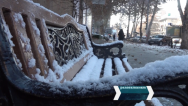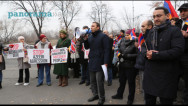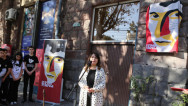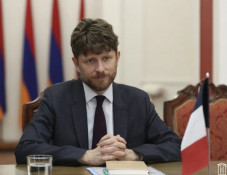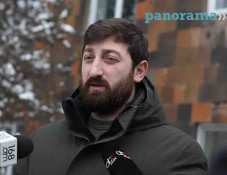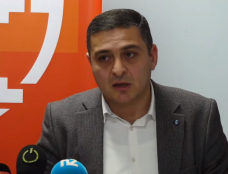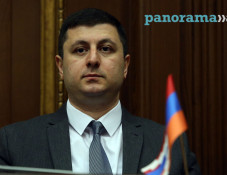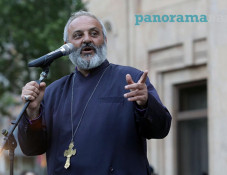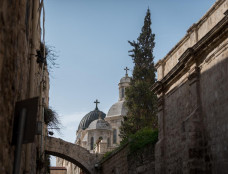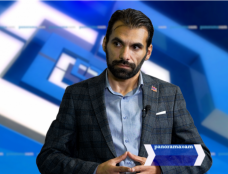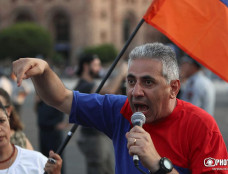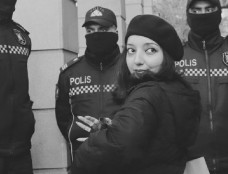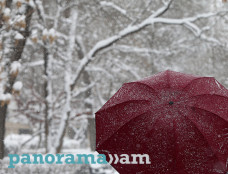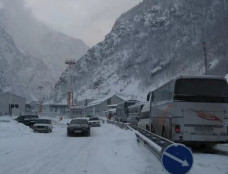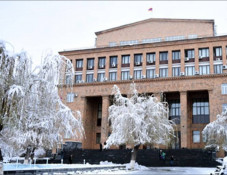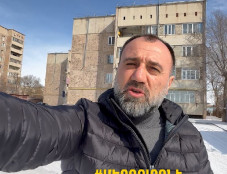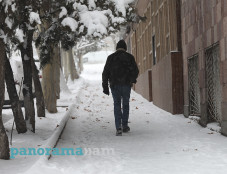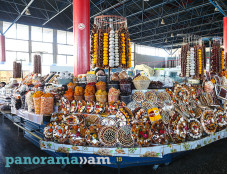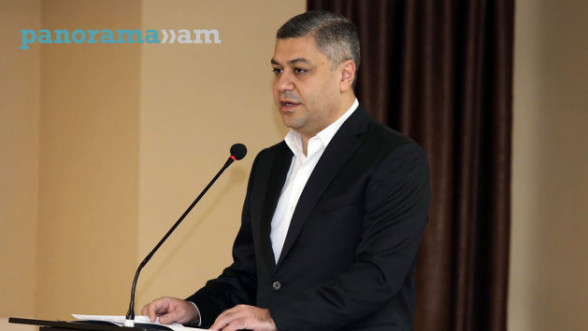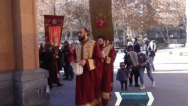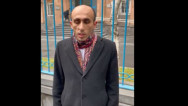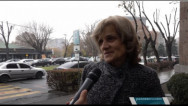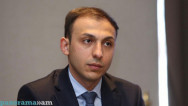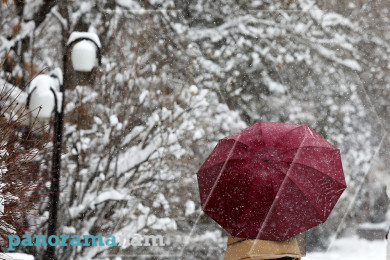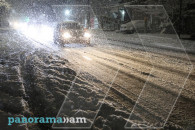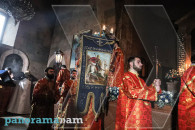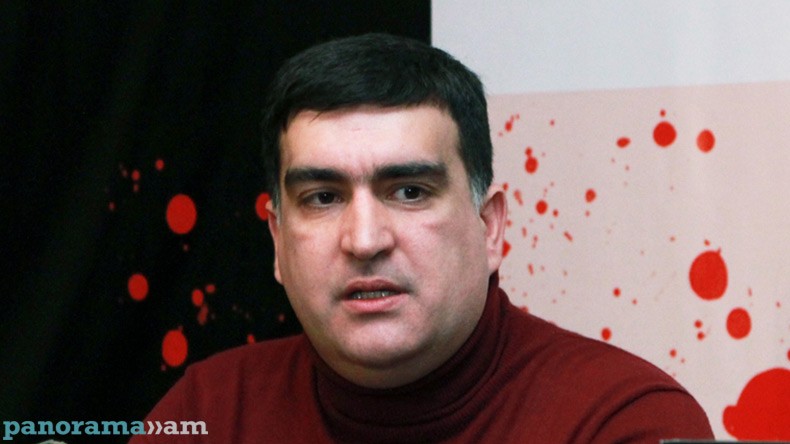
Aris Ghazinyan: Every time Yerevan rose from ashes and ruins
Many foreigners visited Yerevan in the 17th century. If the arrival of European missionaries, merchants and envoys in Armenia was already “a matter of course,” Russian traders’ visit was something new. The establishment of the commercial relations between Russia and Persia became a catalyst for the visits. Armenian journalist and researcher Aris Ghazinyan writes about it in his book “Yerevan: with a cross or on the cross,” which is an attempt of setting and considering an extremely diverse range of processes directly or indirectly forming the character of the development of the territory in question and predetermining the inevitability of turning Yerevan into the main centre of the Eastern Armenia, and later on into the capital of the recovered Armenian state.
The annexation of Kazan and Astrakhan Khanates to the Russian Kingdom by Ivan IV set a base for establishing a regular trade between formerly quite distant Russian and Persian lands. Having a port, Astrakhan became a key centre of the trade between Russia and Persia. Given the special role the Isfahan Armenians (Persian homagers) played in that sphere, the city also became a prominent centre of Armenian life.
As the bilateral commercial relations developed, the Russian merchants made their first visit to Yerevan. One of them was Fedot Kotov, from Moscow, who travelled to Persia from 1623 to 1624 on Tsar Mikhail Fedorovich’s order. He also had a special task from the Ambassadorial Prikaz [an administrative department in medieval Russia, ¬– ed.] to describe his way and submit a report. His diary became the base for “Journey of the Merchant Fedot Kotov to Persia,” a book containing one of the first documentary descriptions of Yerevan found in the Russian chronicles.
Vasily Gagara, a Russian merchant from Kazan, visited Yerevan during his pilgrimage to sacred places and described “Yerevan with monasteries.”
Hieromonk Arseniy (Sukhanov), who visited Yerevan in mid-17th century on Tsar Aleksey Mikhailovich’s instruction, also provides interesting information about Armenia. He writes about the Armenians’ mass capture by Shah Abbas and the “great and marvellous” Armenian churches, “They say, there were about a thousand churched around Yerevan; this can be true, they are many now, too.”
Jean-Baptiste Tavernier, the Prince of Diamonds, who travelled the world, writes the following about the landscapes in Switzerland, “save for one place in Armenia, nowhere have I seen such a beautiful sight as in Aubonne!” This confession is cited by Nikolay Karamzin in the “Letters of a Russian Traveler,” Ghazinyan writes.
Tavernier writes that Yerevan Fortress was mostly inhabited by Muslims; the Armenians only had some shops there, while themselves lived in the city lying not far from the fortress. He notes that the population in the city is 20 times more than inside the fortress. “From Tocat to Tauris the Inhabitants are for the most part Christians. Which large Tract of Ground being that which the Ancients call’d the Province of Armenia, ‘tis no wonder to meet with fifty Armenians for one Mahometan,” he writes.
Ghazinyan notes that the 17th-century Russian and European authors describe Yerevan in different ways. However, they were anonymous in calling the country they visited Armenia, and Yerevan the capital of that country.
The Yerevan Fortress, which had already earned the fame of being unassailable, was the core of the city. After repeated reconstructions, it nevertheless retained its basic square-like planning. The fortress had three main gates: the Southern ones opened towards Tabriz and Nakhijevan, the Eastern opened towards Shirvan and the Western took directly to the thalweg of the River Yerevan. There were also Northern gates in the direction of Tiflis.
Inside the fortress, Yerevan beglerbeg’s palace, mosques, a bath, barracks, warehouses, shops and habitable houses could be found. Practically, the entire administrative apparatus was inside the fortress. As for the city itself, Ghazinyan writes that it was situated to the north-east of the fortress. Based on Tavernier’s information, it can be assessed that the total number of the inhabitants of the blocks of Yerevan between 1660 and 1670 was about 50 thousand.
The residential area was divided into three main districts. The older and the biggest one was on the north-eastern side. The Armenians called this district “hin Yerevan” (Old Yerevan) and “hin tagh” (old block), where trade and crafts lines, markets, inns, baths and other public buildings were situated. Churches and chapels (Katoghike, St. Paul and Peter, Gethsemane, Gagarda Ojakh and others) and mosques (Geoy and Shahar) could be found. The block was mainly populated by Armenians, who were engaged in trade, crafts and gardening in the farmstead.
The second residential district was situated on the Kond hill (Tapabash). The houses of noble residents, meliks, were here. Tapabash was divided into Upper and Lower parts. The block was predominantly Armenian. However, gypsies (Boshas, Loms) also lived here, who had adopted Armenian Christianity centuries before and spoke their enciphered language, Lomavren, besides Armenian. There was also a small number of Shias living in Kond. Early medieval religious buildings, including St. Hovhannes Mkrtich Church in Upper Tapabash and Poustinia of St. Ananias in lower Tapabash, which had repeatedly been reconstructed, stood on the two opposite slopes of Kond hill. Kozern, an Armenian cemetery, lied to the north of them. Tapabashi Mosque also functioned on the hill.
Another district, called Dzoragyugh in Armenian, was situated to the south-east of Kond and “slid” into the Hrazdan Gorge in parallel terraces. The main religious building in Dzoragyugh was St. Sargis Church.
The third residential district, “Karanki tagh” (Quarry), was in the region of old quarries in Yerevan’s south-east. This district was mainly Muslim-populated, who were mostly engaged in cattle breeding and gardening, as well as looking after draft animals of the visiting merchants. There were mosques (Damirbulag, Haji Novruz, Haji Jafar) and Armenian churches (St. George and others) in the block.
Meanwhile, against the backdrop of the gradual weakening of the Qizilbashes’ positions and the Ottoman Empire’s less active eastern policy, the representatives of the national elite started to work out plans of restoring the Armenian independent statehood. In 1677, Catholicos Hakob IV Jughayetsi summoned a secret council of representatives of the national clergy and meliks, according to Israel Ori, a participant of the council. A decision was made to delegate a mission headed by the Catholicos to Latin Europe, as there was no alternative to the “Latin missions” for a long time. By that time, the Catholicos had already sent appeals to the Popes Alexander VII and Clement X, as well as to French missionaries with the hope to reach Ludovicus XIV. A while later, he also sent a letter to Jan III Sobieski, the Polish King, who, still as a hetman, had defeated the Turks in Khotyn a few years before (in 1673).
The Catholicos’ activities could not but alarm the leadership of the empire and the shah’s deputies, the beglerbegs of Yerevan. According to Zakaria Kanakertsi, Hakob Jughayetsi was even taken hostage once, and the ground were not even his political undertakings but rather the construction activities. The Catholicos was imprisoned in Yerevan Poustinia but soon fled to the shah.
By the second half of the 17th century, Yerevan had turned into a significant market for merchants beyond the boundaries of the Ararat Plain. The city was developing not only as a commercial and educational centre. Chardin writes about Armenian comedians. On 11 March 1673, the French merchant had the chance to watch the Armenian comedians’ reprises and scenes in the Yerevan governor’s palace. He called them the mimes of the East and even compared their play with opera, Ghazinyan writes.
The fall of the Safavid Dynasty had already commenced, and some of the governors already allowed themselves fairly a lot. Sefi Kuli-khan II, Beglegbeg Sarukhan’s successor, brought prostitutes to the city. “Arriving in Yerevan, he began spreading a new evil. He sent people to Tavriz and ordered them to bring dissolute women. What was not a custom of our country – holding prostitutes – he confirmed now. He published a decree forbidding the Christians from going out on rainy days, for they stank and desecrated the Muslims. <…> then the number of the robbers and the thieves in the villages rose. For that reason, no one could set on a way, as they were being robbed. Thieves were rushing into many churches and robbing them,” Zakaria Kanakertsi evidences.
“In the eighties of the 17th century, the situation in Yerevan was controversial. From the one hand, there was the unquestionable development of the city, and from the other, the social relapses that resembled metastases of the metropolis’ mortal illness. This is when the Nature intervened,” Ghazinyan writes hinting at the destructive earthquake that hit Garni on 4 June 1679. In Kanaker, a village near Yerevan (currently a district inside the city), about one and a half thousand people were killed. Inside Yerevan, the figure was incomparably higher.
The earthquake ruined all the buildings and splendid residences, monasteries and churches. The Yerevan fortress, mosque and minarets crashed down up to the ground. Springs started to well out in many places, while many springs dried out. Cliffs collapsed and filled irrigation ditches, blocking the way of the water. Many villages turned into ruins. There was not even a hencoop left in Karanker, according to Zakaria Kanakertsi. Meanwhile, no temples were left for organising burial services save for St. Katoghike church and the Gethsemane chapel in Shahar, Ghazinyan writes.
Isfahan, the metropolis, allowed the city’s restoration because it recognised the necessity to have a strong fortress on the north-western outskirts of the empire. A great construction of Yerevan started in June 1679. The overwhelming majority of the well-to-do residents did not leave the city.
“Once again Yerevan was constructed anew, once again essentially a ‘new city’ was erected. Every century of the Christian era submitted Yerevan its own account, tested it for the current maturity, created all the necessary and sufficient conditions for the final extinction of the Armenian life in the city. Still, every time Yerevan rose from ashes and ruins,” Ghazinyan writes.
The 18th century saw a new stage in the history of Yerevan and the Armenian people. Its main peculiarity was the drift of the focus of expectations of the national political thought towards the north, Russia, as the sole power truly capable of ridding the Christian population of the thousand-year-long Muslim pressure.
To be continued
Aris Ghazinyan’s “Yerevan: with a cross or on the cross” is a book about the social and political history of Yerevan and Yerevan district (as a habitat) since the declaration of Christianity to the beginning of XIX century. In addition to demonstrating historical facts based on archive documents and sources, the book also considers the fundamental theses of the Azerbaijani historiography and Pan-Turkic ideology aimed at appropriating the historical, cultural, and spiritual heritage of the Armenians and other nations of the region by falsifying their history.
Related news
- Aris Ghazinyan: People surviving in various districts of Biblical highland were gathering in Yerevan
- Aris Ghazinyan: Seeing Armenians’ well-ordered lands, Abbas I started working out plans of using Armenian resource in economic development of country
- Aris Ghazinyan: Timur took thousands of Armenians out of Armenia to develop crafts and trade in his empire
- Aris Ghazinyan: Yerevan became place of pilgrimage for Christians since late 13th century
- Aris Ghazinyan: Average seventh-century inhabitant of Yerevan embodied collective image of the Armenian of that time
- Aris Ghazinyan: Territory of Yerevan generates unlimited time in its limited borders
Newsfeed
Videos


